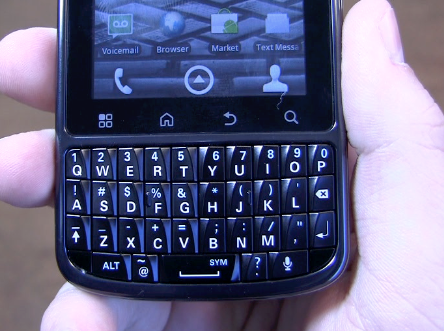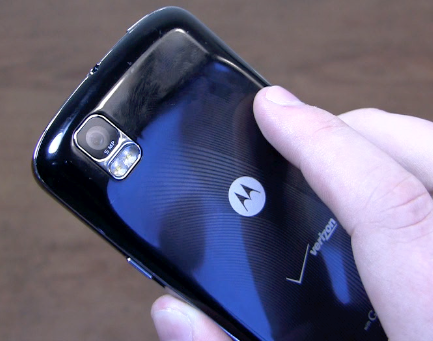
Announced last month at CTIA in San Francisco, the Motorola Droid Pro is appealing to RIM's bread and butter - the enterprise group. With VPN support, enterprise messaging capabilities, and a portrait QWERTY keyboard, it looks and feels like it's up to the task, but is it? After unboxing and spending a few days with it, here's what I've discovered thus far:
- The Droid Pro is a global device, so you get quite a bit in the box - AC adapter, USB cable, and several adapters for various countries. It comes with a 2 GB microSD card installed in the phone.
- The Droid Pro sports a 3.1-inch display, and while it took me a while to get used to the portrait orientation, the design works well. Those coming from BlackBerry will adopt it without a problem, but anyone migrating from an iPhone 4, Droid X, EVO 4G, Fascinate, or any other high-end device will be disappointed.
- The phone sports Android 2.2 with a toned down version of MOTOBLUR that the company calls the Motorola Application Platform. Overall, performance is zippy, with little to no lag. You get the typical Verizon applications: 3G Mobile Hotspot, Backup Assistant, City ID, My Verizon Mobile, Skype Mobile, and VZ Navigator. I like how BLUR (excuse me, Motorola's Application Platform) offers programs like Files and Task Manager out of the box.

- The portrait QWERTY keyboard is roomy and easy to use, though the ALT and shift button placement took a while to get used to. Still, the keys are tactile, and within minutes, I was typing with ease. The keyboard seems a bit stiff to me - when typing on the Droid Pro, it's less "quick pecking" and more "hard pushing."
- Droid Pro packs a 5-megapixel camera, and it's not great. Outdoor shots came out blurry and grainy, and quality was worse in low-lit areas. Editing options include scenes, effects, exposure, and picture resolution. Video quality was equally mediocre - decent for the occasional video here and there, but not going to replace your point-and-shoot camera.

- Motorola typically scores high marks in the voice department, so I was surprised at how unimpressive Droid Pro's call quality is. Calls sounded garbled and frequently cut in and out, even when service appeared to be strong. I was in a Verizon Wireless dead spot in Northeast Charlotte over the weekend, and in two tests, the Droid Pro dropped the call. Speakerphone was decent, though I had some trouble hearing my caller when I tested it at a busy coffee shop.
- In its quest to become a BlackBerry competitor, the Droid Pro missed a key element: battery life. Even in comparison to other Android handsets, the Droid Pro's battery life is terrible. With moderate use that included calling, text messaging, e-mailing, browsing the web, and downloading apps, the battery lasted about eight hours. With light use, I was able to make it through the day, but as a business-centric device, the battery life leaves a lot to be desired.
The Droid Pro is a nice alternative to disenfranchised BlackBerry users, but outside of Android being installed on the device, it doesn't provide a real improvement over the BlackBerry platform. Ultimately, it comes down to BlackBerry 6 versus Android, and while Android may be more functional in certain cases, the tradeoff comes in poor battery life, frustrations with call quality, and potential signal strength issues.
Stay tuned for the full review!


